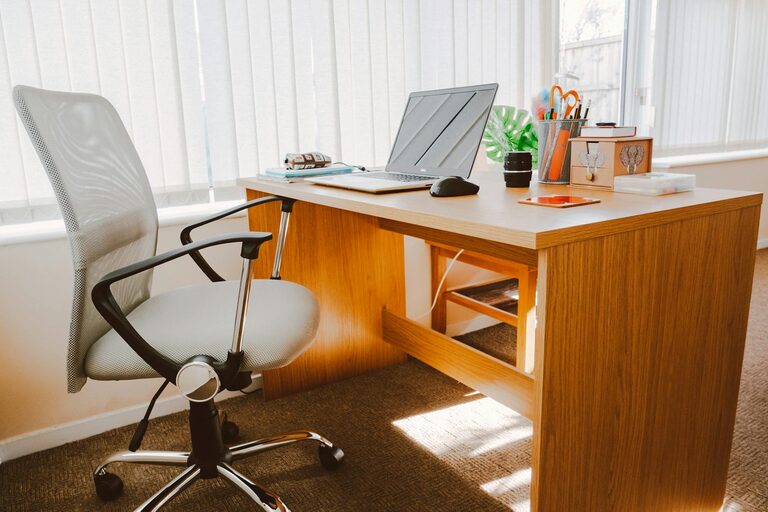Choosing the right desk chair is essential for comfort and productivity, especially if you spend long hours working at a desk. A comfortable chair not only supports your posture but also helps prevent common issues like back pain and fatigue. With so many options available, selecting the perfect chair can feel overwhelming. This post will guide you through practical tips to help you find a chair that fits your needs and workspace.
Understand the Importance of a Comfortable Desk Chair
Before diving into specific features, it’s important to recognize how a good chair affects your workday. An ergonomic chair supports your body’s natural posture, reduces strain on muscles and joints, and can improve focus and efficiency. Investing time in choosing the right chair pays off in comfort and health over time.
Key Features to Look For in a Comfortable Desk Chair
Adjustable Height and Seat Depth
Your chair’s height should allow your feet to rest flat on the floor while your knees are at a 90-degree angle. Look for chairs with adjustable height settings to customize it for your desk height and body proportions. Some chairs also offer adjustable seat depth, which is helpful if you want to ensure proper thigh support without pressure behind the knees.
Lumbar Support
Lower back support is critical for preventing slouching and back discomfort. A chair with built-in lumbar support helps maintain the natural inward curve of the spine. Adjustable lumbar support that can be moved up or down allows you to position it perfectly for your back.
Seat Cushion and Padding
Comfortable cushioning that balances softness and support can keep you comfortable throughout the day. Avoid chairs with overly firm or overly soft padding, as either extreme can lead to discomfort. Breathable materials also help prevent heat build-up.
Adjustable Armrests
Armrests support your arms, reducing strain on your shoulders and neck. Having armrests that can be adjusted in height, width, or pivot adds flexibility to your seating position. When your arms rest comfortably, you reduce tension in upper body muscles.
Swivel and Mobility
A chair that swivels and has smooth-rolling casters allows you to move around your workspace easily. This feature helps reduce awkward twisting and reaching, which can strain muscles during prolonged seating.
Backrest Tilt and Recline
Being able to tilt the backrest or recline slightly allows you to change your posture throughout the day. This can improve blood flow and reduce stiffness. Look for a chair with adjustable tilt tension to control the recline resistance.
Additional Considerations for Your Desk Chair
Chair Size and Weight Capacity
Make sure the chair size matches your body type and the space available in your workspace. Check the manufacturer’s weight capacity to ensure safety and durability.
Material and Breathability
Chairs come in a variety of materials including leather, mesh, fabric, and vinyl. Mesh chairs are popular for their breathability, which helps keep you cool. Fabric chairs offer a range of textures and can feel softer, while leather chairs are easy to clean and look professional.
Style and Design
While comfort is the priority, consider a chair that matches your workspace style. Whether your office is modern, traditional, or minimalist, there’s a chair design to complement your décor.
Tips for Testing and Buying a Desk Chair
Try Before You Buy
If possible, test chairs in a store before purchasing. Sit in the chair for several minutes, and try adjusting its features to see how comfortable it feels. Pay attention to how well it supports your back and how easily you can move.
Read Reviews and Ratings
Online reviews can offer valuable insights from other users about the chair’s durability and comfort over time. Look for consistent feedback about both positives and drawbacks.
Budget Wisely
Comfortable chairs come in a wide range of prices. While high-end ergonomic chairs often offer more customization and durability, there are many affordable options that provide good support. Consider your budget but avoid choosing based solely on price.
Maintaining Your Desk Chair for Long-Term Comfort
Once you’ve chosen a comfortable desk chair, proper maintenance is important to keep it in good condition. Regularly clean the upholstery, tighten any loose screws, and check that adjustment mechanisms work smoothly. Replacing worn-out cushions or parts can extend your chair’s lifespan.
Conclusion
Choosing a comfortable desk chair involves considering various features that support your body’s needs and fit your workspace. Prioritize adjustability, lumbar support, and cushioning to find a chair that helps you stay comfortable and focused. A well-chosen desk chair can make a significant difference in your workday comfort and overall health.
Invest some time in research and testing, and enjoy the benefits of a perfectly tailored seating experience!

